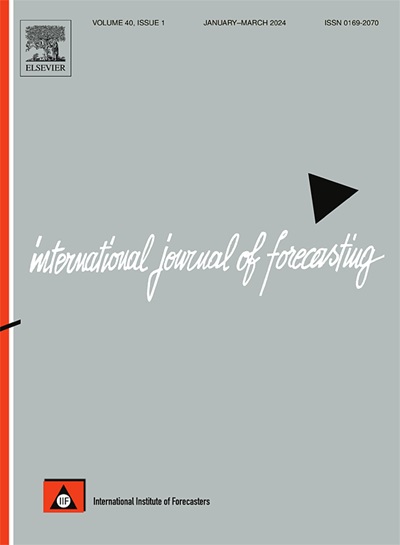时变参数作为脊回归
IF 7.1
2区 经济学
Q1 ECONOMICS
引用次数: 0
摘要
时变参数(TVP)模型在经济学中经常用于捕捉结构变化。我强调一个未被充分利用的事实,即这些实际上是脊回归。这立即使计算、调优和实现比状态空间范式容易得多。除此之外,即使在高维情况下,解决等效双脊问题的计算速度也非常快,关键的“时间变化量”是通过交叉验证来调整的。使用两步脊回归处理不断变化的波动率。我考虑了包含稀疏性(算法选择哪些参数变化,哪些参数不变化)和降阶限制(变化与因子模型相关联)的扩展。为了证明该方法的实用性,我用它来研究加拿大货币政策的演变,使用大型时变本地预测和要求滞后长度的tvp -var。应用程序需要估计多达4600个TVPs,这是新方法可以达到的任务。本文章由计算机程序翻译,如有差异,请以英文原文为准。
Time-varying parameters as ridge regressions
Time-varying parameter (TVP) models are frequently used in economics to capture structural change. I highlight a rather underutilized fact—that these are actually ridge regressions. Instantly, this makes computations, tuning, and implementation much easier than in the state-space paradigm. Among other things, solving the equivalent dual ridge problem is computationally very fast even in high dimensions, and the crucial ‘amount of time variation’ is tuned by cross-validation. Evolving volatility is dealt with using a two-step ridge regression. I consider extensions that incorporate sparsity (the algorithm selects which parameters vary and which do not) and reduced-rank restrictions (variation is tied to a factor model). To demonstrate the usefulness of the approach, I use it to study the evolution of monetary policy in Canada using large time-varying local projections and TVP-VARs with demanding lag lengths. The applications require the estimation of up to 4600 TVPs, a task within the reach of the new method.
求助全文
通过发布文献求助,成功后即可免费获取论文全文。
去求助
来源期刊

International Journal of Forecasting
Multiple-
CiteScore
17.10
自引率
11.40%
发文量
189
审稿时长
77 days
期刊介绍:
The International Journal of Forecasting is a leading journal in its field that publishes high quality refereed papers. It aims to bridge the gap between theory and practice, making forecasting useful and relevant for decision and policy makers. The journal places strong emphasis on empirical studies, evaluation activities, implementation research, and improving the practice of forecasting. It welcomes various points of view and encourages debate to find solutions to field-related problems. The journal is the official publication of the International Institute of Forecasters (IIF) and is indexed in Sociological Abstracts, Journal of Economic Literature, Statistical Theory and Method Abstracts, INSPEC, Current Contents, UMI Data Courier, RePEc, Academic Journal Guide, CIS, IAOR, and Social Sciences Citation Index.
 求助内容:
求助内容: 应助结果提醒方式:
应助结果提醒方式:


